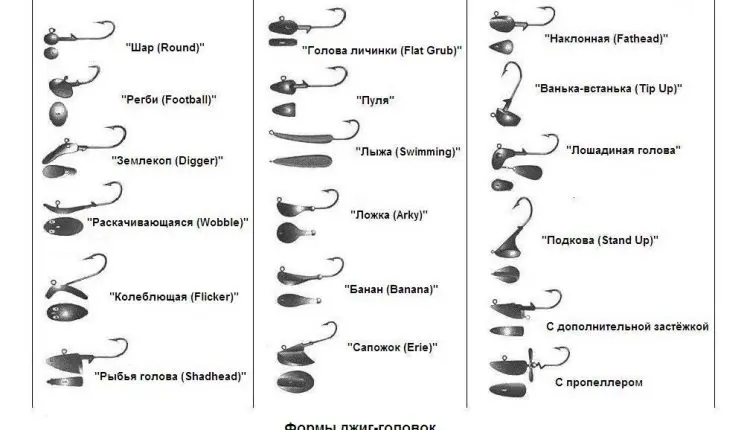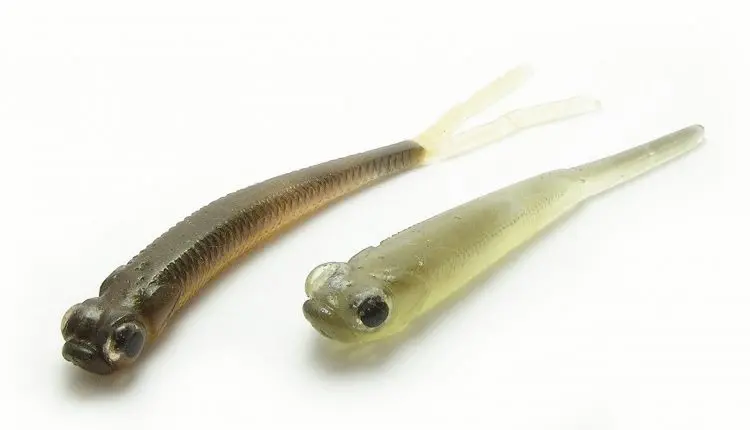Contents
Ice fishing for pike on a jig in winter (the progenitor of which is the well-known mormyshka), unfortunately, has not yet become widespread. However, having a stock of artificial silicone baits that are actively used in the warm season, why not try them in ice fishing? Practice shows that catching pike on a jig in winter from ice is no less interesting than fishing in warm weather. Moreover, this method will be interesting for both beginner winter fishermen and experienced fishermen.
Winter ice jig. Pike
In order for pike fishing to be successful, you need to know the behavior of the main predator of freshwater reservoirs. At the very beginning of winter, when the fish are still very active, it is better to conduct ice fishing closer to the shore. It is here that small fish gather, which the pike feeds on. It is also necessary to stay close to the shore for safety reasons, since the ice is still thin. As a rule, pike hunting during this period is the most productive for both jig and other types of baits. After the ice hardens, the predator remains active for some time, and then becomes slower and more selective in the bait.
The best pike fishing on a jig in winter in calm cloudy weather. Very good bites happen when it snows. The worst biting is on frosty sunny days.
Sometimes the pike completely ignores any bait. The fish becomes active towards the end of February, as it prepares for spawning, and the “zhor” begins. Here, as they say, “fisherman, do not yawn!”
Tackle
In fact, tackle for ice fishing in winter is not much different from summer: small rigs, bait made of soft silicone. The diameter of the fishing line for pike or zander ranges from 0,3 to 0,35 mm. When pike fishing, a prerequisite is the use of a soft steel leash. It will help protect the tackle from pike teeth. The next steps are.
- tie the jig head to the end of the fishing line;
- a silicone bait is hooked to the hook. Choose it in such a way that it matches the hook number.
Jig lures can be assembled and equipped in advance at home.
Fishing rod for winter jig
The uniqueness of a rod for ice winter jig in miniature size. Compared to a summer rod, this is a “pocket” option. And, in the literal sense. The handle is preferably “warm” made of cork material, the reel is capacious so that you can wind the fishing line on it longer.

Fishing rod option for winter ice jig
Ice winter jig technique
After the tackle is prepared, a hole is drilled and the bottom layer is fished with a jig head with a silicone bait. If the bottom is silted up or there are no bites, they resort to tricks, slightly modifying the tackle, changing baits and animation techniques.
The lure is jerked up and down to make it play. Here are some options for playing ice fishing:
- Lower the bait to the bottom and stir it there.
- Raise the jig bait in steps of 200-300 mm (for pike, this is the most acceptable option), make a short pause and let go, and repeat this cyclically.
- “Tossing” with small pushes, which makes the silicone move (as far as possible) in the horizontal plane.
If fishing with the help of an ice jig is done in stagnant water, then the angler, due to the small size of the hole, is limited in his actions. If there is a current, then he catches a larger area due to the fact that the tackle is carried away for a certain distance. However, there is no need to go to extremes. If the tackle takes it far from the hole, you can skip the bite.
Another option to make plumb fishing a little more varied is to drill a hole above the underwater slope and then “jump” down its ledges.
Winter jig heads

For ice fishing, you can use jig heads of any shape: from classic spherical ones to the most exotic ones: bananas and horseshoes. It’s just a matter of availability. However, given that fishing is carried out in a vertical plane, heads with a wider amplitude of play will work better. The same oscillating and swinging jigs or modified with a disc.
An example of one of these modified lures in the video:
Some anglers, remembering that pike are still a large predator, use jig heads up to 40 g. However, slightly lighter options (18-30 g) perform optimally. The same range is used for zander. By the way, perch jigging will require a lighter, 12-gram jig head.
Baits
The main feature of ice jigging, which differs from summer fishing, is that the lure works only in a vertical plane. Fishing with balancers and winter spinners is well studied, so often many anglers are cautious, preferring not a jig, but familiar gear. Therefore, let’s dwell on this in more detail.
Silicone bait has such advantages.
- low cost;
- high level of catchability;
- the possibility of self-production.
The disadvantage of silicone jig is a short service life. Predatory fish, including pike, spoil the bait, sometimes just biting it. Many silicone baits in the cold “tan” and lose their ability to play. Therefore, for ice fishing, devices made of soft jelly-like silicone are used.
The winter predator is a demanding and capricious client, paying attention only to attractive edible bait. Often, in order for the bait to play better, a 2-3 cm PVC disk is attached to it, which swings the bait, taking it to the side (you could see its version in the video, which is posted a little higher in the article). The ideal option is when the bait gives the impression of a small fish that moves near the bottom with periodic additives.

Silicone slugs
A good result is obtained with slug baits, which outwardly resemble fish feeding in the bottom part of the reservoir. For the same purposes, small vibrotails can be used. The pike actively reacts to the vibrations created by this lure and attacks it.
Twisters are among the catchy baits. A fleshy silicone product with a wide, sweeping tail, attracts the attention of a predator, even if he is passive and lazy.
You can use other types of silicone: worms, crayfish, nymphs, etc.

Variety of types of silicone baits
As for the tint range, then too bright colors should be refrained from. Greenish or brownish-silver colors work best.
It is desirable to store silicone baits in a box made of a polymer material that does not damage rubber. If the “snakes” are of different colors, it is advisable to place them in different compartments. Otherwise, the products will “paint” against each other, losing their original color.
Pike Jigging
The main feature of ice pike jigging is that getting a freshwater predator to attack the bait is not an easy task. In winter, the pike is sluggish, keeps closer to the bottom of the reservoir and is in no hurry to waste its precious energy reserve. You have to choose the right catchy “jigs” and use the animation effect to provoke the fish to attack.
Video: Ice vertical jig from A to Z
Conclusion
The beauty of under-ice jigging is that it is still an “unfinished book”. Anglers have been using jig lures for quite some time now. Therefore, every fan of winter fishing has a unique opportunity to bring something new to the technique of this type of winter fishing.









